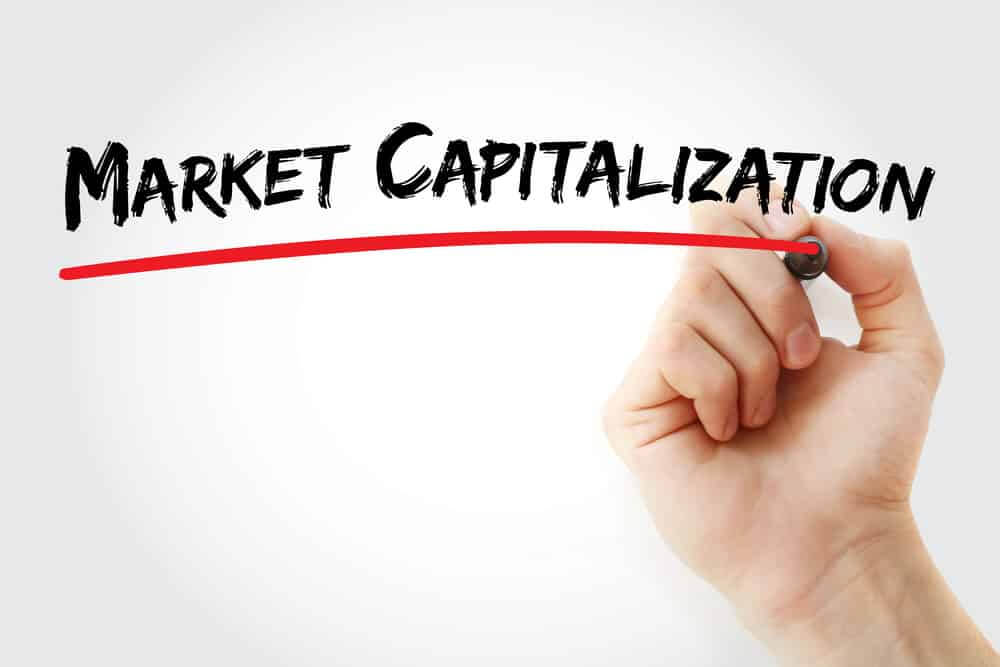
Market Capitalization and Company’s Stock Price: Explained
Market capitalization is a company’s total market value, also called a market cap. By multiplying the number of shares outstanding by the company’s stock price, determine A company’s market cap.
The stock price has a proportional value and is relative to a company’s worth. Therefore, the stock price only represents a change in percentage in a company’s market cap at any time.
Any changes in a percentage affect a stock price, resulting in an identical percentage change within a company’s market cap. This change is one of the main reasons investors seem to be so concerned with stock prices. For example, if in the market a price drops by $0.10, it can result in a $100,000 loss for a stockholder with one million shares.
KEY TAKEAWAYS
- The market capitalization of a company, also named as market cap, measures a company’s market value.
- The amount of shares multiplied by the current share price is equal to the market cap.
- A business with 50 million worth of shares with a stock price of $100 per share could have a market cap equal to $5 billion.
- The company’s market value classifies Stocks. They have a division of big-caps and small-caps, one of them referring to a company with a more significant market value while the other one refers to a company with a smaller market value.
How to determine a Share Price
Commonly speaking, supply and demand drive the prices in the stock market. This fact makes the stock market relative to other economic markets. After selling a stock, a buyer and seller switch money for share ownership. The price of purchasing the stock becomes the new market price. After selling a second share, this price becomes the latest market price, and so on.
Some specific quantitative formulas and techniques are helpful to predict a company’s shares prices. DDMs, also known as Called dividend discount models, is based on the idea that a stock’s recent price matches the total of all its future interest payments (after being discounted back to present value). By defining a company’s share by the whole of its supposed future dividends, share discount models apply TVM – the theory of the time value of money.
In manageable terms, the market capitalization of the company is equal to its share price multiplying by the number of shares.
Formula
For a better understanding, there is a formula: number of shares x share price = Market Capitalization.
There is an event named IPO = an initial public offering with a company’s market cap established. Through this process, a company pays an investment bank which is also known as a third party, to use valuation techniques and highly complex formulas to determine a company’s value. They also decide to the public at what price and how many shares they offer. For example, a company with an estimated value of around $100 million might want to distribute 10 million shares at approximately $10 per share.
After a company decides to go public and its shares begin to trade on a stock exchange. After this process, supply and demand determine its share price for the company’s shares in the market. In case of high demand for its shares according to some favorable factors, the price will rise. If the firm’s future growth potential doesn’t seem reasonable, sellers of the stock can decrease its cost.
For example, let’s say that Microsoft trades for $71.43 on a particular day and has around 7.8 billion shares. Consider also that the company has a value of around $71.43 x 7.8 billion = $557.154 billion. Let’s take this one step and follow the idea. We can notice that Facebook, which has a $167.45 stock price and 2.38 billion shares (market cap = $396.8 billion), is worth less than a firm with a $71.42 stock price and 7.8 billion shares (market cap = $557.154 billion).
Misunderstandings About Market Capitalization
However, some people often use it to describe a company (for example, terms such as large-cap and small-cap). However, we should note that the market cap can not measure the value of a company’s assets. Only a careful analysis of the fundamentals of the company can do that. Market capitalization is an incomplete way to value a business because the basis of its market price can not fundamentally reflect how much a piece of the company is worth. The market sometimes overvalues or undervalues shares. The market price can only determine how much it is willing to pay for shares and not how much it is worth.
In addition to that, it measures the price of buying all of a firm’s shares. However, the company’s market cap can not determine the value the company might cost to get in an alliance transaction.
Sometimes people use a market cap synonymously with a firm’s market value. Therefore, it is essential to keep in mind that a market cap applies only to the market value of a company’s assets instead of including its overall market value, including the value of its debt or investments.
-
Support
-
Platform
-
Spread
-
Trading Instrument




